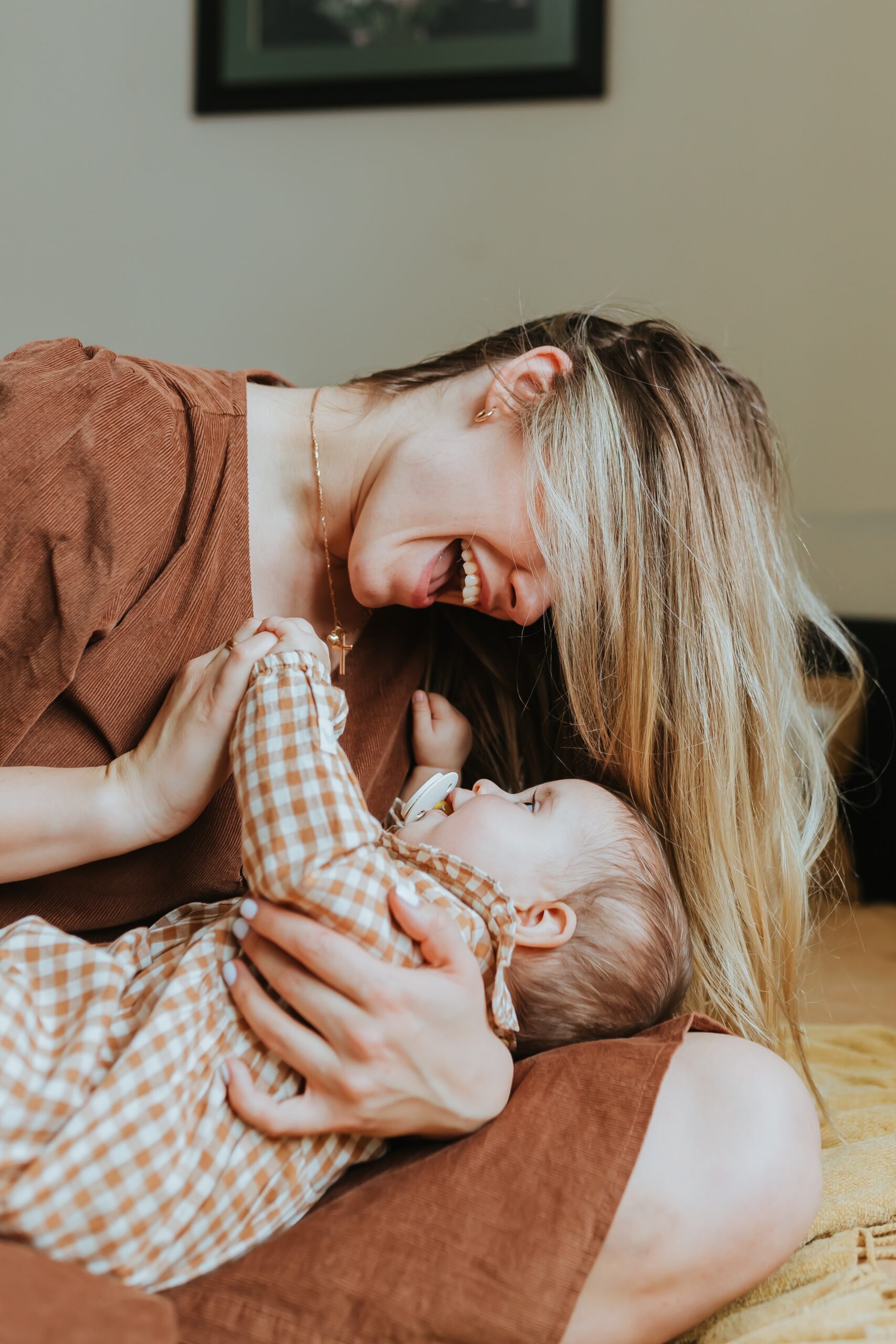
Once little ones start combining words, it opens up a whole new world of communication! Now instead of telling you what something is or what they want, they can tell you how they got that boo-boo and all about those ducks they saw at the park.
When do we expect toddlers to use word combinations?
This milestone is expected somewhere between 18-24 months. During this time, toddlers also begin to think beyond the here and now. They can start to think about what happened yesterday or what they’re looking forward to tomorrow. The growth we see in language during this time gives your little one new ways to communicate about all of these exciting things!
Other signs your toddler will start combining words soon
Your toddler is using about 50 words We see combinations sometime after little ones reach the 50 word milestone. It’s almost as if they need a big enough storehouse of words and then they can start combining them.
They are using different kinds of words: Words are building blocks and before your toddler can tell you that it’s a “big dog” or “go mommy,” they need different kinds of words like verbs and adjectives to pair with what they want to tell you about.
They are combining words with gestures: Before toddlers combine words with other words, they combine words with gestures. This is different than pointing and saying what they are pointing to. It’s about combining words and gestures to make new ideas. An example would be pointing to a dog and saying “big!”
How do I help my toddler combine more words?
Model, model, model: Language in = language out. Help your little one build their vocabulary by modeling words that match what they’re interested in throughout the day. Saying a word several times in a slower way will help make it stick.
Model different kinds of words: In addition to labeling things, model different kinds of words to help give your toddler the building blocks for combinations. Here are some examples:
Verbs/action words like “go,” “push,” and “run”
Adjectives/describing words like “big” and “fast”
Pronouns like “mine” and “yours”
Prepositions such as “in,” “on,” and “out”
Use gestures in your own speech: Gestures support speech development by making our words more visible and therefore easier to pick up. An easy way to do this is to make your hands match your mouth. Research shows that parents who were instructed to use more gestures had toddlers who used more gestures (Goldin-Meadow, 2015) Using more gestures gives little ones more ways to express new and more complex meanings and you a way to model more complex language that matches.
What if my toddler isn’t saying many words?
The first step in helping your toddler combine more words is to help them build their initial vocabulary. While we know little ones meet milestones at their own pace, we also know there are so many things we can do to support them along the way! There are so many ways to maximize the small, everyday moments and turn them into big opportunities for speech and language development. Check out my Big Little Talkers Course to learn step-by-step how to help your little one say more and get off to the best possible start with speech and language devilment.
References:
Goldin-Meadow, S. (2015). Gesture as a window onto communicative abilities: Implications for diagnosis and intervention. Perspectives on Language Learning and Education, 22, 50-60.





